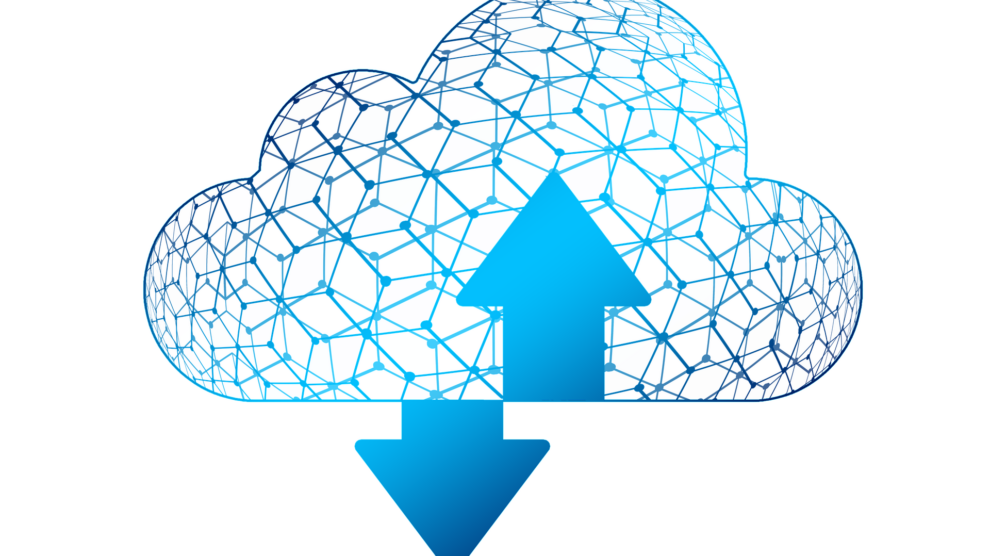Effective cloud monitoring ensures the smooth running of infrastructure and applications hosted on clouds. It effectively manages cloud resources and helps identify anomalies. Furthermore, maintaining high service levels and delivering a flawless user experience depends on understanding application performance, which monitoring provides.
According to Report Prime’s Cloud Marketing Research Report, the global cloud monitoring market was valued at $1.977 billion in 2022. The main difficulty for businesses is organizing comprehensive cloud monitoring with cost control. Every dollar counts; therefore, companies look for cloud monitoring tools with great visibility without needless costs in such environments.
Using data-driven tactics in cloud monitoring helps companies make decisions based on analytics and real-time data. By identifying inefficiencies and duplicate resources, this method improves monitoring accuracy and also helps find cost-saving prospects.
In 2024, several factors have accentuated the importance of cloud monitoring:
- Increased Cloud Adoption: More companies are increasingly using sophisticated cloud solutions, requiring thorough operational efficiency monitoring
- Cybersecurity Threats: The rise of security breaches in cloud platforms highlights the need for proactive monitoring
- Regulatory Compliance: Improved monitoring is necessary to comply with data privacy and security regulations
- Cost Management: Economic needs underscore the importance of monitoring cloud resources to optimize their utilization
- Technological Advancements: Rapid technological advancements demand flexible and advanced monitoring solutions to ensure performance and reduce downtime
In this article, we will explore the factors associated with cloud monitoring and how you can create a cost-effective cloud monitoring strategy in 2024.
Cost Factors Associated with Cloud Monitoring
It is essential to know the exact costs that come with cloud monitoring. Consider the following factors:
1. Data Storage Costs
Data storage is one of the main running costs in cloud monitoring. High log verbosity and data preservation result in extensive data storage requirements.
Techniques such as data aggregation, which merges data points, and data sampling, which gathers only a subset of data, can greatly reduce storage needs while still offering important insights.
2. Monitoring Tool Subscriptions
For cloud monitoring tools, the market presents a spectrum of pricing schemes. Though it is predictable, a fixed price could cause overpaying for non-used services.
While usage-based pricing matches prices with actual use, therefore encouraging cost efficiency, per-user pricing can increase expenses as the company expands. Selecting the correct model based on your specific usage patterns is critical.
3. Alert Fatigue
In large corporate environments, controlling the deluge of warnings is crucial. Employees may become desensitized to too many alarms, leading them to miss vital notifications.
Using smart alert systems with priority based on context and degree of severity will help solve this problem. By managing routine alarms on their own, automated replies help to further lighten the labor of human operators.
4. Lack of Optimization
Frequent tool and configuration tuning is important to avoid cost overruns. Many companies neglect routinely reviewing their monitoring systems, which results in ongoing expenditures on ineffective products or services.
Regular assessments and changes guarantee that every element of the monitoring system is helping to achieve its intended use without wasting resources.
Benefits of a Cost-Effective Monitoring Strategy
Implementing a cost-effective monitoring strategy offers numerous benefits, including:
1. Enhanced User Insights
Effective monitoring techniques provide important new perspectives on user interaction with your systems. This information is essential for optimizing user interfaces and improving general user experiences.
Understanding user behavior patterns helps businesses better match their offerings to user expectations, improving customer satisfaction and retention rates.
2. Optimized Resource Allocation
In cloud systems where resource allocation might dynamically vary depending on demand, a well-executed monitoring system guarantees that resources are used effectively. Monitoring systems enable IT departments to instantly identify underutilized or overused resources. This increases operational effectiveness and helps to lower expenses related to lost resources.
3. Improved Decision-Making
Monitoring helps acquire data-driven insights that can greatly influence decision-making procedures. Monitoring systems give leaders real-time data and trends, therefore enabling fast, informed strategic decisions. This covers operations in scale, risk reduction, or even company strategy modification to fit the market’s current state.
4. Maintained Website Performance
Constant monitoring is essential for companies running online platforms or services to guarantee that these systems stay functional and effective.
Monitoring detects potential performance bottlenecks or failures before they affect users, maintaining high availability and minimizing downtime. This dependability is essential for maintaining a professional image and ensuring consumer confidence and satisfaction.
5. Increased ROI
Ultimately, all these advantages help to increase the return on investment. Businesses can significantly increase their financial results by lowering operating expenses through efficient resource usage, raising customer satisfaction through improved service delivery, and rendering informed judgments, resulting in more successful strategies.
Building Your Cloud Monitoring Strategy
Consider the following aspects when building your specific cloud monitoring strategy:
1. Define Monitoring Goals
Start by precisely stating the objects of your monitoring and the reasons behind them. Your goals can involve maintaining uptime, maximizing performance, spotting security risks, or controlling compliance.
Every objective should directly help a particular company outcome, so the monitoring method is naturally strategic.
2. Leverage Data for Informed Decisions
Use the information from monitoring tools to guide company decisions. Along with gathering information, this entails examining it to find trends, project possible problems, and provide solutions.
If data shows, for example, that resource use peaks at particular times, you might choose to automate certain processes to manage the demand without human involvement.
3. Choose the Right Tools
Choose monitoring technologies appropriate for your cloud infrastructure’s size, complexity, and particular requirements. Think about scalability, simplicity of integration, feature set, and pricing.
Tools should interact seamlessly with current systems to improve their value while also offering a complete view of your surroundings.
4. Optimize Alerting Systems
Design alerting systems to minimize noise and ensure the transmission of only pertinent, useful alerts. This entails defining suitable alarm thresholds, classifying them according to degree, and possibly including machine learning to improve alert accuracy over time.
Implementing a Cost-Effective Monitoring Strategy
The implementation of a reasonably priced cloud monitoring system consists of a set of focused activities meant to simplify procedures, lower expenses, and improve monitoring efficiency:
Leverage Automation
Automate data collection, event tracking, and even the first problem diagnosis—reiterative tasks. This speeds up and improves the precision of the operations, in addition to lowering the labor expenses related to hand monitoring.
You can also view redial actions – where systems self-correct based on specified criteria without human intervention—as automated.
Embrace Open Source Solutions
Open source solutions provide cost savings and flexibility, particularly for businesses with the technical know-how to customize and maintain open-source monitoring systems. These tools allow customization to specific needs without the licensing expenses associated with proprietary software. Still, one should take the overall cost of ownership – including support and maintenance—into account.
Monitor Your Monitoring Tools
Consistently evaluate your monitoring tools’ efficiency and performance. This meta-monitoring ensures that you aren’t wasting money on pointless or duplicated tools.
Regular audits can help to assess tool performance, change configurations, and retire tools that no longer fit your changing requirements.
Regularly Evaluate and Adjust Your Strategy
Business environments and technology are always evolving, which requires a flexible monitoring strategy.
Frequent evaluations of your monitoring plan will help to guarantee that it stays in line with your company goals and is fit for any new technologies or changes in the cloud scene. This can entail reviewing your monitoring objectives, the information you collect, and your analysis and reaction to that data.
Conclusion
As we advance through 2024, the relevance of cloud monitoring in guaranteeing operational efficiency, compliance, security, and cost control increases. Companies that successfully implement a cost-effective cloud monitoring solution protect their technological assets and set themselves up to react quickly to technological developments and market changes.
A well-built cloud monitoring system has many advantages, including improved security postures, performance and uptime, and resource use optimization—all of which help to lower running costs and increase return on investment. The true value of cloud monitoring, however, comes from its ability to provide a thorough operational analysis of a company, thereby supporting proactive management and strategic decision-making.
Businesses that want to remain competitive in the fast-changing digital terrain of 2024 have to give top priority to the creation and application of a cloud monitoring system fit for their particular objectives and difficulties. By using a dynamic and data-driven strategy, companies can ensure that their cloud environments are efficient and safe, and are aligning with their general corporate objectives.





